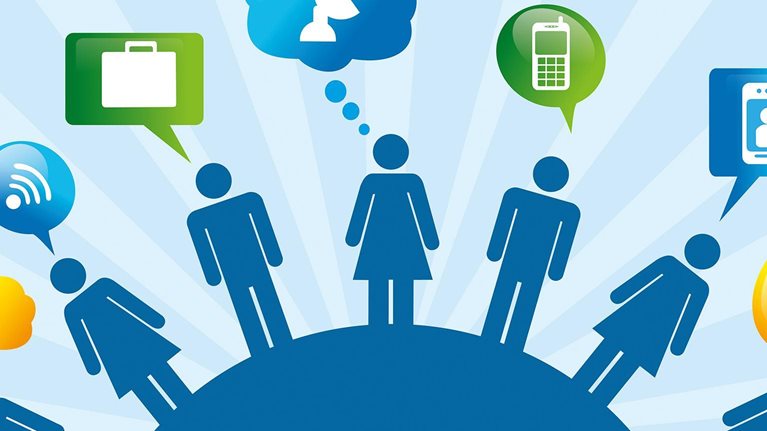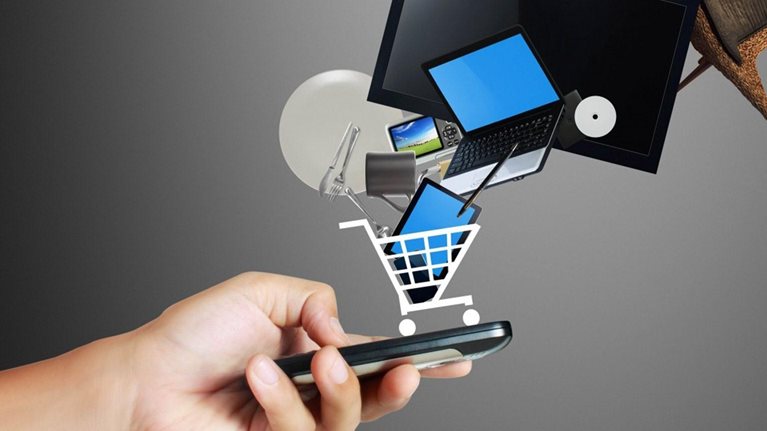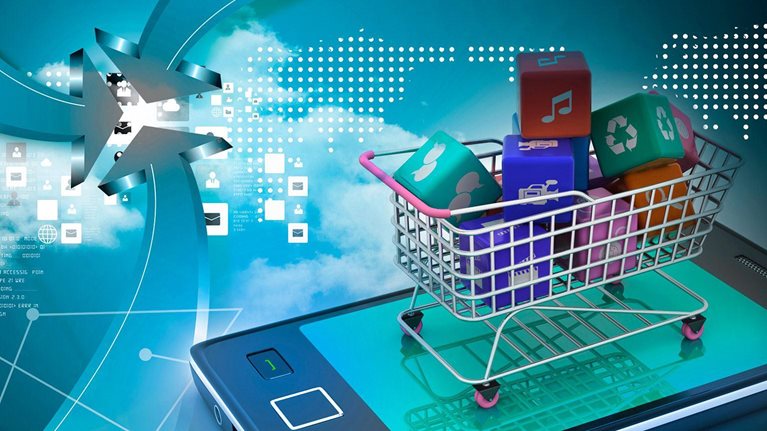As mobile takes an ever-greater role in customers’ lives, the need for companies to understand its true advantages grows. In our latest Discussions on Digital podcast, the head of McKinsey’s consumer digital-excellence initiative, Brian Gregg, explores mobile trends—and myths—with several Silicon Valley leaders. He is joined by Dianne Esber, an associate principal in McKinsey’s San Francisco office; Sunil James, an investor at Bessemer Venture Partners; Mary Beth Laughton, senior vice president of e-commerce at Sephora; and Kira Wampler, chief marketing officer at Lyft. An edited transcript of their conversation follows.
Mobile today: Myths versus reality
Brian Gregg: What are some of the things that mobile gurus have talked about that either haven’t come true or could be dismissed as a complete myth? For example, in 2020, 80 to 90 percent of sales will still happen in a physical location. So mobile will play a role, but we’re still in a store.
Kira Wampler: When I was at Trulia, we heard a lot that “the desktop is dead because there’s mobile.” In fact, there’s new evidence that, lo and behold, desktop is not dead. In fact, the pie is growing.
People are spending more time with electronics. On the weekend, people use the mobile app because they’re at open houses. During the week, they use the desktop, because they’re working on their home-buying search or their mortgage. And some things, like going through a mortgage process, are extremely hard to do on a mobile device.
Mary Beth Laughton: Mobile is one of the key assets that helps drive store growth. It allows our staff to better help our clients. It’s only going to strengthen the store experience, especially if you focus it and have the right mobile experiences to supplement the in-store experience.
I was in a meeting the other day with our head of stores. She suggested that instead of creating a whole separate experience for the store staff to use, we should bolster the app experience on the consumer’s mobile and make it a tool that our staff could use with the consumer to help them find what they’re looking for.
The next mobile battlefield?
Brian Gregg: There’s a lot of hype about the next domain to be won. What’s the next battlefield? The living room? The automobile?
Sunil James: I don’t think it’s a physical thing. I think it’s you. By that, I mean all this data that comes up about you, no matter where you are. People are trying to get a sense of who you are—without knowing who you are—through the actions you take and the places you go. The next big battlefield is to figure out who can do something to figure out who you are. That’s why you see all these steps to try to get more data from you. Everything else is just a mechanism to know you better. It’s not a device or a phone or a glass. It’s those services that reside on top of all of these things to help manufacturers, vendors, retailers, or whoever to deliver better products and experiences to their customers.
Kira Wampler: The way I think about it is to ask what category millennials are changing. We’ve seen with transportation, for example, that they have Lyft and other choices. How are they changing that experience, and how are their expectations changing that experience? What’s the role of millennials as they move into different categories?
Brian Gregg: Are the millennials driving this change? Is mobile? Is it the two together?
Sunil James: When I was growing up, my dad said, “You need to save up enough money for a car.” Now, with Lyft, you can get a ride for five bucks. It changes how you think about spending. With millennials, the cost of doing things has changed tremendously in one generation. That’s changing a lot of incentives around buying habits.
Millennials or the next generation recognize that your life is not about your data. It’s not about your device. It’s about the person sitting across from you. I regularly get into conversations when I use Lyft or Uber about these people’s stories and what’s motivating them. More often than not, people say they’re doing it for fun. Yes, they use it as a chance to make money. But they’re also doing it for fun and to meet people.
Mary Beth Laughton: We spend a lot of time just thinking about the client experience from a mobile point of view, picturing if we’re going to be telling a story with multiple products and a piece of content with it and how it will show up in mobile. We can build up from there in a lot of cases. Otherwise, we’ve found if you sell for desktop first to try to whittle it down, it often ends up not working.
We’ve taken a philosophy that we still actually want about 70 percent of our content to be shared across platforms and 30 percent on top of that to be mobile specific. For us, it’s working out because it’s putting enough organizational focus and resource focus on truly mobile, unique experiences. But it’s also leveraging across channels and creating some continuity of experience for our clients.
A question of conversion
Brian Gregg: I think if you asked most e-commerce companies today, you’d find that, in terms of conversion, desktop is number one, mobile web is second, and then the app is third. Do you see mobile surpassing desktop conversion at some point?
Mary Beth Laughton: It depends on how you’re approaching your mobile web and app. Our app outpaces the conversion of web. For us, the reason that app is so highly converting relative to web is that we’ve oriented it toward our best clients. Around 60 percent of the people shopping in our app are in the top two tiers of our loyalty program. We’ve oriented the content to make them feel like it’s a rich experience so they’ll want to come back.
With mobile web, we just want to make the shopping easy for them, whereas with app, they want a richer experience. It leads to higher conversion and frequency. It’s been a conscious investment for us, the app piece.
We spend a lot of time thinking about behavior. A good example for us is this behavior around selfies. We wanted to know how to capture that and get people involved and having fun with it on our site. It led to this idea of having what we call a Beauty Board. People take a selfie, they’ve put together a look with our makeup and skincare and so forth. They upload it to our site, primarily with their mobile, so over half the traffic’s coming through mobile. And then they’re tagging products, which leads to commerce, too.
Dianne Esber: For a long time, it was all about traditional media spend versus digital spend. And we’re spending more time online, but our spending isn’t there. Companies have rebalanced spend away from TV, radio, newspapers, et cetera. They’re online. But the shift that hasn’t happened yet is from PC to mobile. There are people who are staunch supporters of mobile advertising and say, “Yes, it’s out there. The shift needs to happen. We saw this play out in digital spend.” And then there are people who say, “We haven’t quite proven that mobile spend quite works in the same way.” It’s going to be very interesting to see how this plays out.
What’s new: Designing experiences
Brian Gregg: What are the capabilities that maybe haven’t historically been critical to success but that will be critical in this new mobile or postmobile era?
Mary Beth Laughton: The companies that really spend the time to understand consumer behavior and design experiences around that are going to win. There’s no shortage of approaches and ideas. A lot of companies are just worried about getting the latest feature and functionality instead of thinking about what the consumer wants and designing to that.
We’ve found some of our most interesting insights just by watching people try to buy on our site. One of our biggest insights was that, before they buy, millennials are going to YouTube to watch a video using the product we’re offering. Then they come back to our site and convert. We realized we’ve got to get enough videos on our own site so they’re not leaving us to go to YouTube.
Sunil James: It’s interesting to hear how you’re thinking about user experiences. It’s not a new concept. It’s just the technology that has changed.
A view to the near future
Brian Gregg: What’s the next curve in terms of mobile’s development in the next three years?
Mary Beth Laughton: We have so far to go in the forms that mobile can take. Take beacon technology, which we’re testing in a handful of stores. We’re so far from fully leveraging it and understanding it. Its power is going to be huge. You can give personalized messaging at any point. We’re doing things like reminding customers when they walk into a Sephora, “You left some items in your basket when you shopped online.” When I think about examples like that, I feel like we have so far to go just to take advantage of the native capabilities of mobile.
Sunil James: Mobile is way more than even a phone or tablet. It’s wearable clothes. It’s your Fitbit. It’s everything that can have some sort of embedded technology within it that gives you a different purview on what you’re doing on the move.
Mary Beth Laughton: Mobile’s great with bite-size content. But it’s not always the right fit. Makeup is a complicated area, for example, where you have to understand all the steps and why you’d use it. We have buying guides online. We have really deep, rich content that people want to engage in. It’s not a two-minute exercise. They don’t want to just spend that time on their phone. They’d rather sit down and absorb it.
Brian Gregg: The trend that I hope takes off is personal-healthcare tracking. It’s great that Fitbit and the rest have figured out how to tell me how many steps I take in a day and how many calories I burn. But I don’t know if it’s game changing. I want to get my vitals daily—hourly, ideally—and that will be phenomenal. In three years, if we’re talking about med tech and health tech, I will love that podcast.
Kira Wampler: I have two thoughts. The first is that there are people who want data, and there are people who need motivation. It’s a very Silicon Valley view that data will produce change. We’re missing the way to keep us motivated and stay on track. Data is one piece of the puzzle, knowing this information is one. We’re awash in data, and we are not awash in information or the why. And the why is also related to motivation.
My second point is I really hope the sharing economy grows. There was recently a PricewaterhouseCoopers report that only 8 percent of Americans have participated in the sharing economy, which is fascinating.
Dianne Esber: Silicon Valley has been a little self-indulgent so far in where we’ve taken this, with apps like Luxe to help find parking in the city. What I’m excited to see is this kind of innovation take over in industries and government, which really need the change. I’m not sure when that inflection point will happen, but something like government could be revolutionized.


